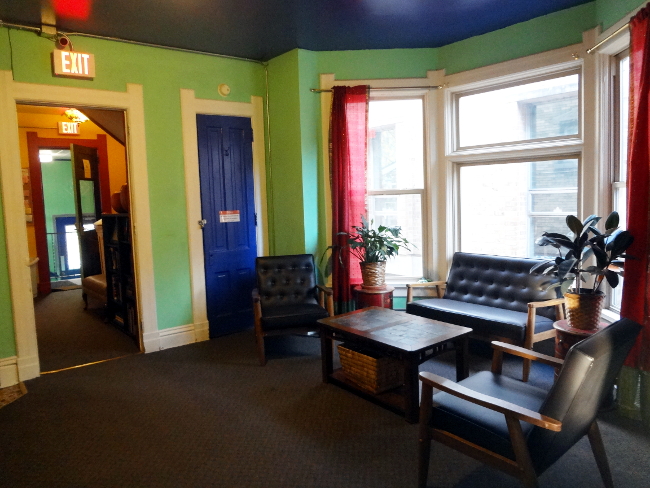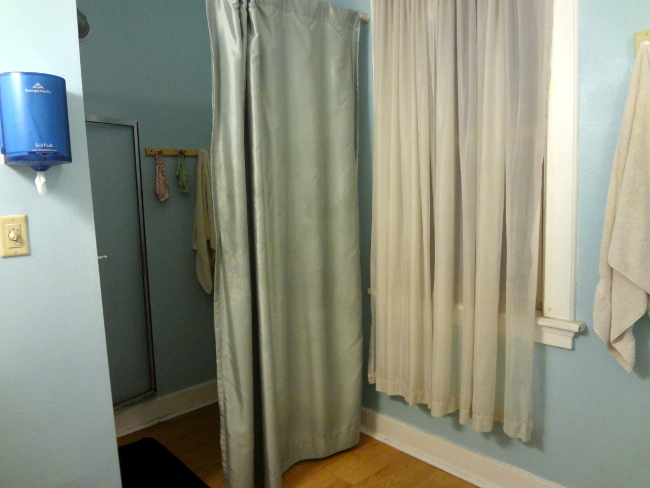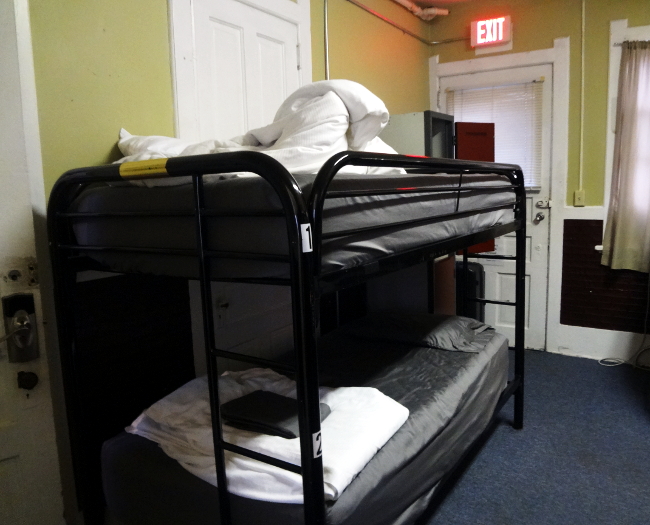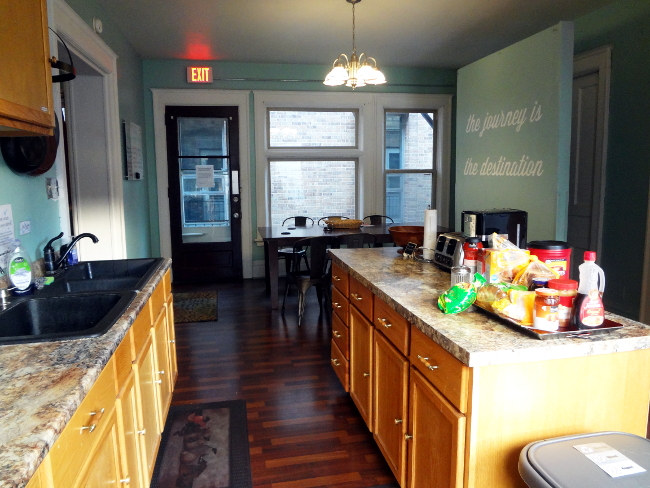As it turns out, when people go to the store in a panic buying mindset, they buy yeast. Bad news for me, as I avoided the store during the panic buying phases while my jar of yeast dwindled more and more. Seeing what was to come on the horizon, I turned to my bread cookbook looking for recipes that did not call for yeast. They were few and far between, and the yeastless ones all called for some other sort of exotic ingredient, like buttermilk. That plan failed, but instead I found a tantalizing reference to using old dough to get new dough to rise. There were few details enumerated in the book or online, so I set out to experiment. Here are the results.
I first made my bread as normal, though I skimped just slightly on the yeast and added a bit more flour and water than normal, because I wanted a regular sized loaf after I pinched off the dough to be saved.
Here’s the little bit of dough that I held back; it fit in my palm:
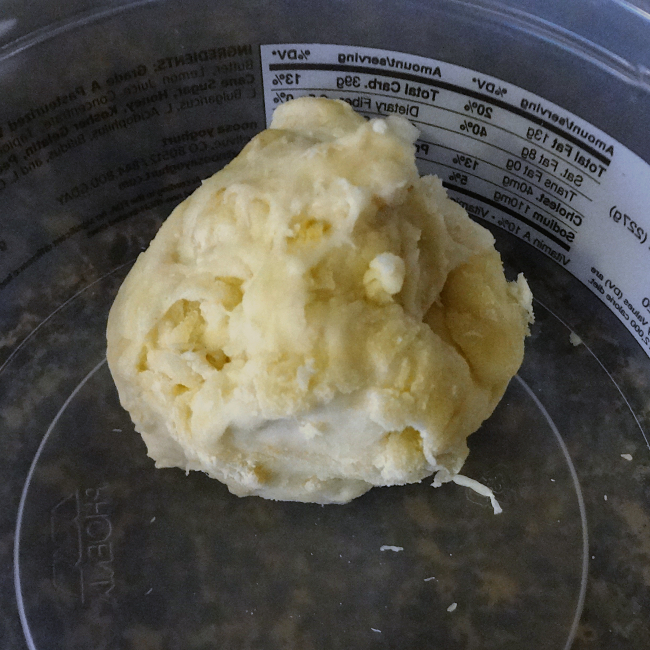
I then baked my loaf as normal. It didn’t rise quite as much as I would have liked, but it was fine, and overall the normal sandwich bread that I make every week:
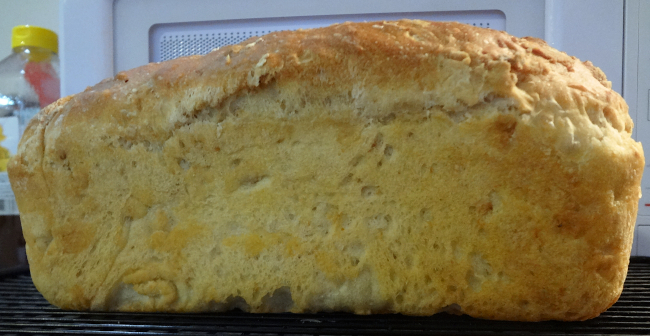
A week later, it was time for the experimental loaf. The old dough had developed a certain sheen during its time in the refrigerator, but otherwise it looked relatively unchanged, though it did have a very yeasty smell:

I left it out for twenty-four hours before trying to do anything with it:
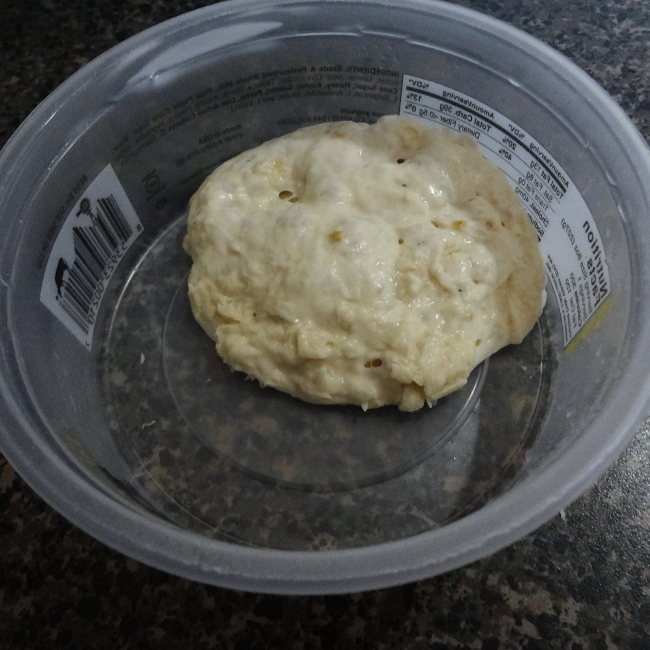
Then came the moment of truth. How was I going to put the dough together? I began by adding warm-ish water (I was very scared of killing the yeast) and sugar to the old dough and mixing it all together. The old dough didn’t really want to break up and, spooked by all the reading I’d been doing about sourdough, I added around a cup of flour as well, and mixed it all up again. I let this all sit for a while, but nothing really seemed to happen and I was growing impatient, so I decided to add the rest of the ingredients and mix it up.
After rising overnight, it looked okay, but not like the fluffy dough I was hoping for. I let it go for about thirteen hours, some of that in the oven with the light on, before finally growing impatient once again:

I punched it down, pinched off a new piece of old dough, and added the rest to the pan:
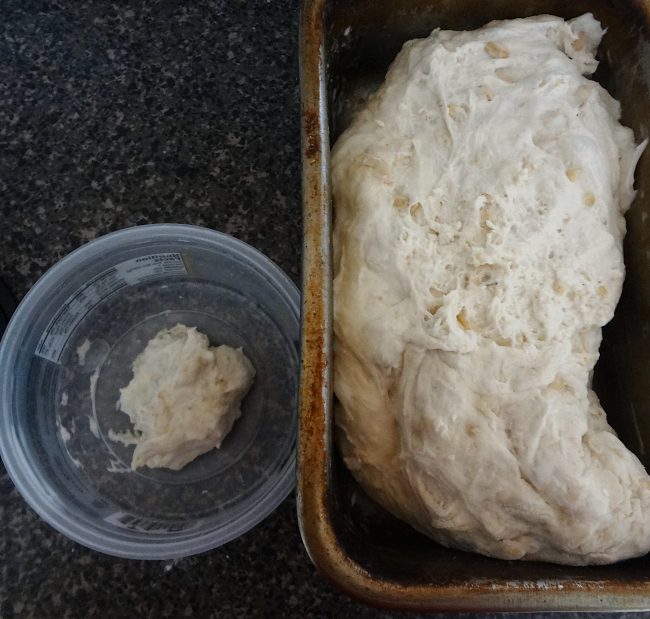
The second rise, also conducted in the oven with the light on, also took forever. Three and a half to four hours later, I had this, which I figured was about as good as I was going to get:
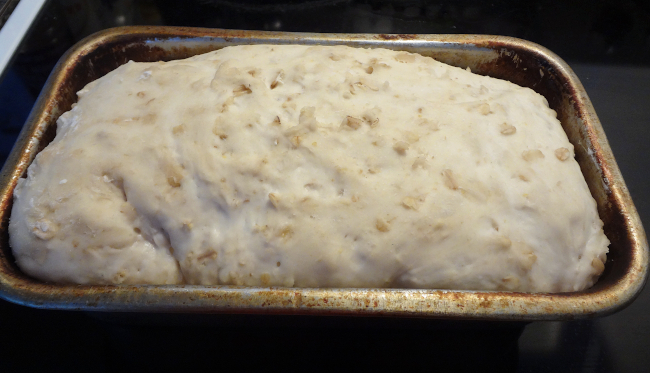
Ultimately, the loaf baked into a fairly respectable specimen of bread, though, again, it did not rise as much as I would have liked. But for an experiment I’ll take it:
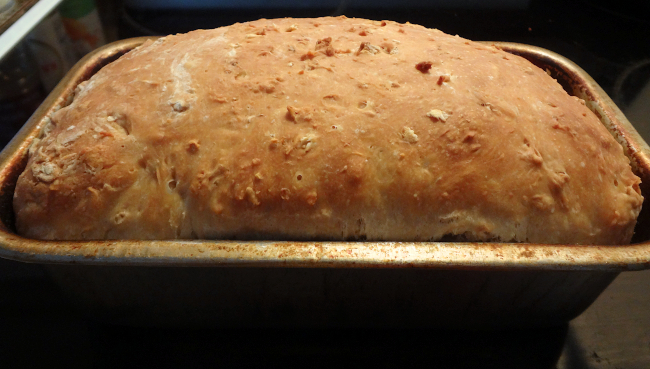
As for flavor and texture, it was…interesting. Definitely a bit denser than my normal loaf, whether due to the mediocre rise or the old yeast, I’m not sure. More surprisingly, the flavor was different, in a way that I can’t quite put into words. A bit stronger, perhaps. I am a creature of habit, so I like my bread to be the same every week and this change is therefore a bit unwelcome. Objectively, though, it’s not bad, just different.
I’m going to be using this method for the foreseeable future, so I’ll update if I have any major breakthroughs in technique. Or check out author Diane Duane’s experiments in baking, whose feelings toward yeast oh so closely mirror my own.
